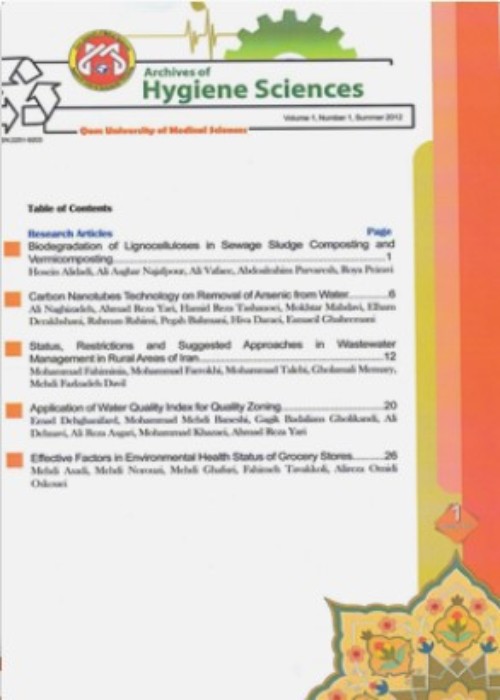Epidemiological Aspects of Needle Stick Injuries Among Health Care Workers in Razi Hospital Ahvaz, Iran, in 2015
Author(s):
Abstract:
Background & Aims of the Study: Needle stick injuries (NSIs) are one of the most causes that expose health care workers (HCWs) to blood infectious diseases such as hepatitis B, C and HIV. HCWs can reduce the rate of NSIs by performing protective procedures. This study was conducted to evaluate the needle stick exposure among health care workers in Razi hospital, Ahvaz, in 2015.
Conclusions According to the findings of our study, it seems that establishment and performs of courses about prevention of needle stick is very necessary.
Materials and Methods
This descriptive study was conducted on 600 HCWs at Razi Hospital, Ahvaz, Iran. The data collection tool was a questionnaire included health care workers type of NSIs, ward, and their activity. Data were analyzed by descriptive statistics and were processed by SPSS version 16.Results
Results showed that 21.35% of volunteers were male and 78.65% were female. The results indicated that recapping the needles was the most risk factor for NSIs. Based on the findings the most important reasons for NSIs were recapping needles were found in 40.82%, handling needle on tray in 22.45%, suturing in 14.29%, dissembling needle devices in 10.20%, passing needle in 8.16% and transit of disposal needle devices in 4.08% of cases, respectively.Conclusions According to the findings of our study, it seems that establishment and performs of courses about prevention of needle stick is very necessary.
Keywords:
Language:
English
Published:
Archives of Hygiene Sciences, Volume:5 Issue: 2, Spring 2016
Pages:
85 to 91
https://magiran.com/p1534009


